Gill Edwards
27th Oct 2017A little over a year ago I succumbed to a respiratory condition and found myself in hospital. My recuperation progressed slowly so my husband suggested I should do something which would encourage me to get out and about.
Having joined our local University Of The Third Age (U3A) just before I fell ill and seen some wonderful photographs their digital photography group had taken, we felt inspired and decided that photography was the way ahead. I bought my first DSLR (a Nikon D3300) in September that year and went out with the U3A group to photograph a local garden. It made me happy and distracted me from the pain in my ribcage. In fact I inadvertently caused some mirth in the group by sitting down and reclining to photograph a bridge! I couldn’t have done that if my attention hadn’t been wholly trained on composition, not pain.
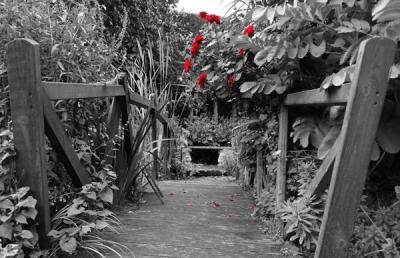
December approached and the group held its annual competition. I doubted my efforts would be up to snuff; after all, I’d only been taking photographs for three months. Still, there’s no point in being in a group if you’re not going to participate so I dutifully entered my three shots into the ‘Improvers’ group. Imagine my astonishment when I earned not only a ‘Highly Commended’ but also second and first place! Now, our U3A group isn’t huge but I was immensely proud. Moreover, the photo of the bridge which made everyone laugh at me took second place. He who laughs last…
My success encouraged me enormously so I began buying magazines and looking at YouTube, which was where I first encountered one of Mike Browne’s tutorials. My first thought was, “Why doesn’t this guy have his own programme on terrestrial TV?”. My second thought was, “Where’s the ‘subscribe’ button?”. Now I had three fabulous resources to help improve my photography – magazines, Mike Browne and my fellow U3A photographers who were wonderfully generous with their help and advice. In fact, last March one experienced lady generously took me to one of her favourite locations for photographing wildlife and tutored me so that I could take shots of wild birds that I had hitherto only dreamt of. By now I had splashed out on a Sigma 150-600c which made my images of nuthatches bigger than the actual bird – yes, I was really hooked on photography.
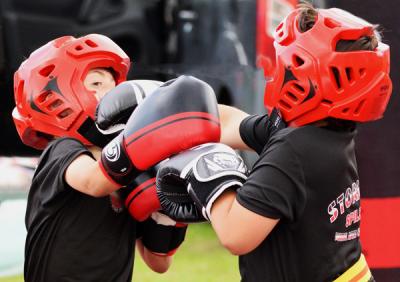
As spring approached, the annual black and white competition was announced and I realised I only had a couple of months to get to grips with monochrome photography. I tried photographing flora and architecture in the low winter sun but nothing seemed to work until the day I went to the seaside and saw some fishermen. Approaching complete strangers and asking them if I could photograph them filled me with dread but eventually I plucked up the courage to approach them, remembering a video Mike produced of street photography when he ingratiates himself into a fast-food retailers trailer.
Instead of asking the fishermen if I could take photographs, I asked how they were doing, what had they caught, how often they fished and other such general chit chat. One of them had noticed my camera and asked what I was photographing so I explained about the camera club and the competition.
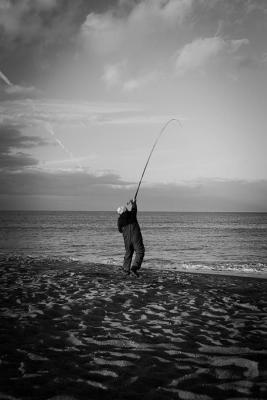
Then I said I thought the fisherman’s shelter might look really good and asked if I could photograph it. He was quite willing. What I didn’t tell him was that I would actually be shooting his portrait with the shelter as a dark background – sneaky, huh? After that I said I really liked the curve of the rod as they cast into the sea, so I got a few shots of them doing that too.
It seems most people are quite willing to let you photograph what they’re doing, which means you can avoid the risk of making them self-conscious by asking if you can photograph them. For the first time I realised that photographing strangers was nothing to fear; in fact, it could be an enjoyable way to meet new friends. A beneficial byproduct of that day was two of my photographs won first and second place in the ‘Improvers’ category of the competition.
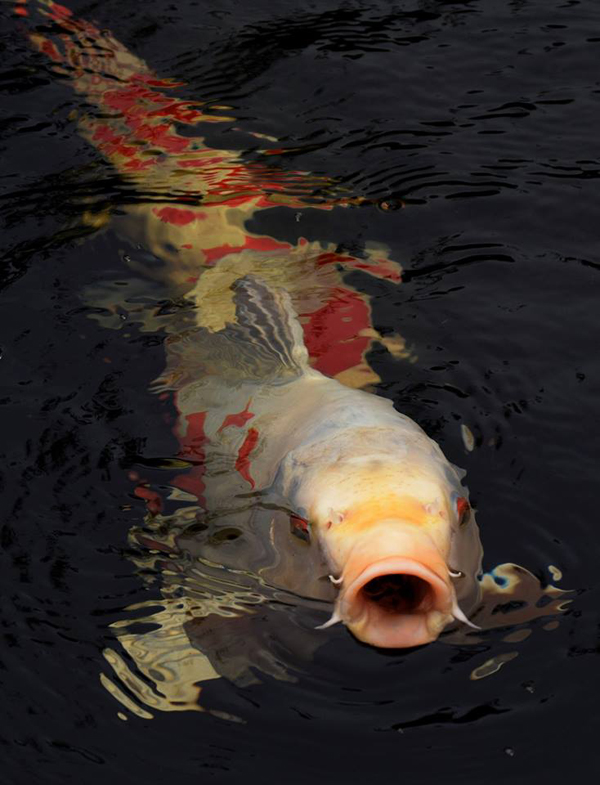
By now my interest in post-processing was taking off and I was becoming more familiar with programs such as RawTherapee and the Gimp. So was my interest in hardware. I realised my kit lenses weren’t very fast (I was learning the jargon) so I invested in a 50mm fixed-focal length lens. A few people outside the U3A were aware of my interest in photography and I found myself in demand to photograph local competitions and events.
When an insurance policy matured recently the temptation to buy a full frame camera was almost overwhelming but I resisted the temptation and treated myself to accessories instead – a sturdy tripod is vital for long exposures and a monopod is very useful when you’re wandering around a country show with a Sigma 150-600. I may upgrade in a few years but I’m going to wait; when you look at the software that’s going into iPhones and the technology that’s going into mirrorless cameras it seems likely that camera technology is on the verge of a huge leap forwards and I’m reserving my dosh until it happens.
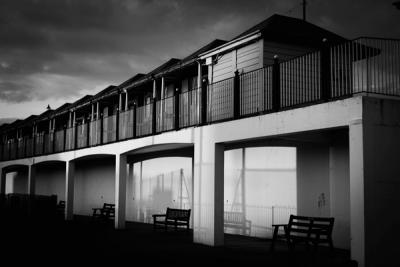
What of the future? I harbour no dreams of turning professional but I love helping the community record its activities and working within our U3A group. Sadly, our leader suffered a mini-stroke a few weeks ago so I have offered to help him with the organisation. I’ve had so many wonderful photography teachers and I’m really looking forwards to the day when I can pass on some of my learning to newcomers. There’s one bittersweet side to the success I’ve enjoyed this year; I’ve been told to enter the next annual competition in the ‘Advanced’ group.
Oh, and my health is much improved.
I've attached 5 photos. The fish won the improvers group and the bridge came second. The fisherman won the improvers black and white group and the promenade came second. I'm hoping the young boxers will do well for me in the future.